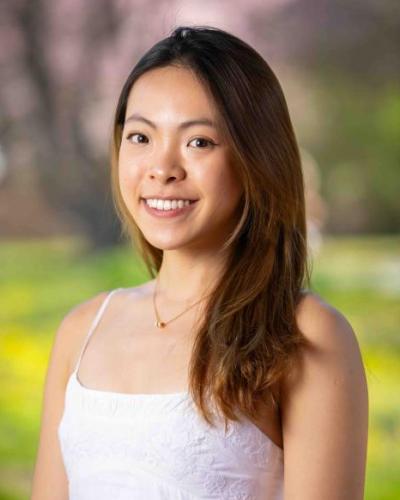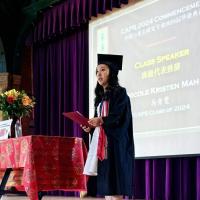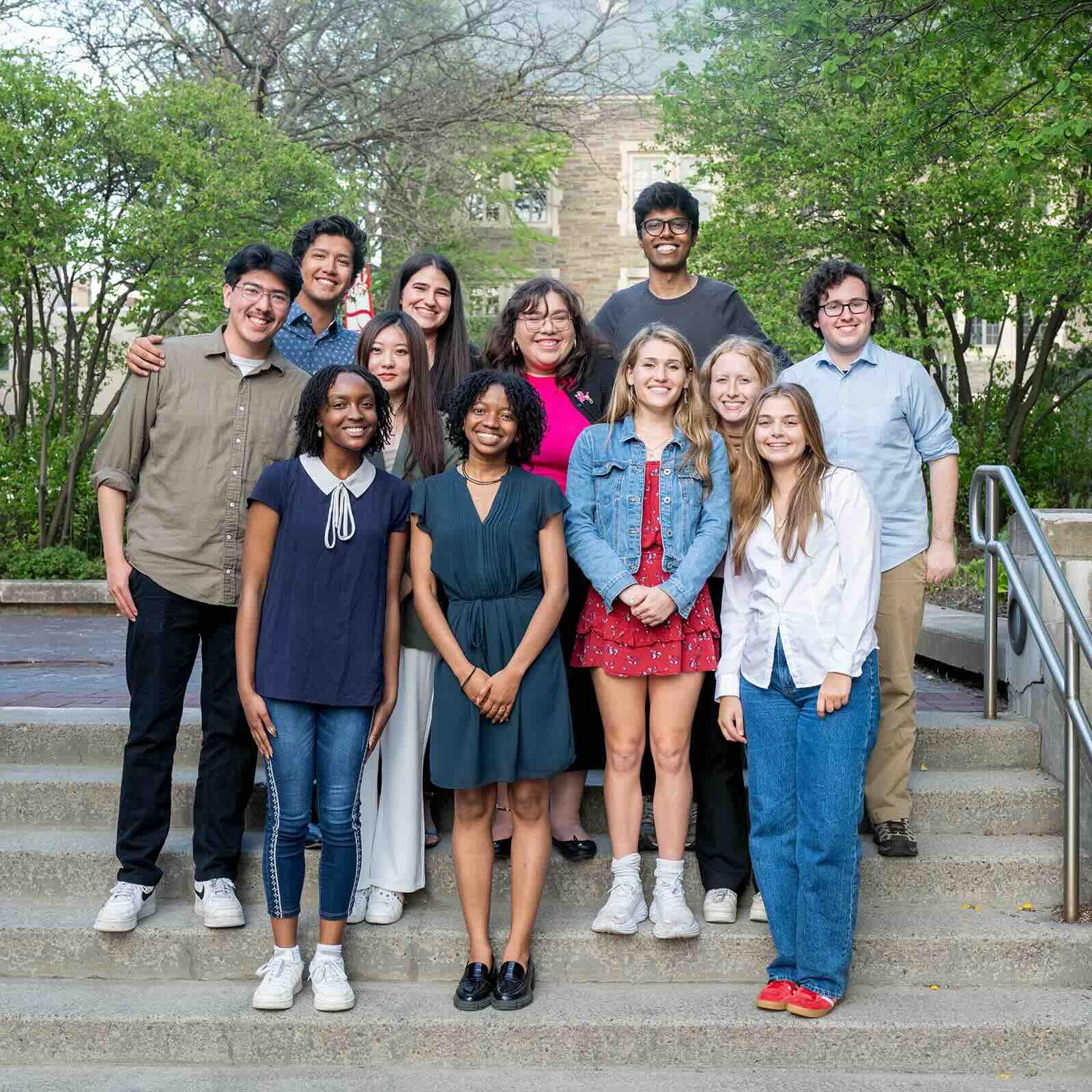At an event hosted on Tuesday, September 24 by the Levinson China & Asia-Pacific Studies Program, Professors Allen Carlson and Eli Friedman and Hong Kong activist Samuel Lee discussed the recent protests in Hong Kong. Professor Friedman expressed the views of the Chinese State and explained the economic advantage of Hong Kong to China. However, traditional methods of maintaining legitimacy in Hong Kong have failed, which has led to the current movement. Mr. Samuel Lee explained the current situation in Hong Kong, and how it has shifted from an anti-extradition law protest to part of an ongoing movement for democracy. He explains the challenges of such a movement, considering factors of anonymity and police brutality. Professor Allen Carlson discussed the current U.S.—Hong Kong relationship and the U.S.’ past and current actions to support Hong Kong. Support for Hong Kong in the U.S. has increased over the span of these protests, leading to the introduction of the U.S.-Hong Kong Human Rights and Democracy Act in Congress this month.
Eli Friedman: Perspective of the Chinese State
Professor Eli Friedman opened the discussion with a description and analysis of China’s perspective of the Hong Kong protests. He stated that mainland China’s primary considerations include Hong Kong’s economic advantage to the mainland, a smooth transition into the assimilation of Hong Kong into the Chinese mainland, and cultural acceptance of state-sanctioned “Chinese-ness” in Hong Kong. However, the latter two points, involving a smooth transition and cultural acceptance of the state’s definition of “Chinese-ness” have failed in China, thus impacting Hong Kong’s economic advantage to the mainland. China would like to solve the issues of transition to assimilation and acceptance of State culture in order to regain the economic power of Hong Kong.
Professor Friedman argues that legitimacy is the largest obstacle to regaining Hong Kong acceptance and support. To achieve internal legitimacy throughout China’s sphere of influence, the Party uses tools such as increasing ethno-national autonomy and improving livelihoods. These two instruments, however, have failed to work in Hong Kong.
Although China maintains a strong desire to overcome all remainders of colonialism, including autonomy from the American empire and constraints of the IMF (as Professor Friedman argues they deserve to), signals most people in Hong Kong today see the PRC itself as a colonizer.
Professor Friedman stated that “[in China] going against the Party is seen as going against the race.” Furthermore, the thought that to be anti-Party is to be anti-Chinese, is a belief spreading throughout China. However, the citizens of Hong Kong don’t want to change from their existing Hong Kong culture to the state-sanctioned culture. This can be seen in the decreasing rate of people who identify as Chinese or Hong Kong-Chinese. Instead these people identify as “Hong Kong-ese.” China has also been slowly working to systematically eliminate all dialects in China, including Cantonese, further raising Hong Kongers’ fears of a rigid assimilationist approach.
On the basis that the Party gains legitimacy from its ability to improve livelihoods, the Party again fails in Hong Kong. At the time of Hong Kong’s turnover, the Chinese state chose to ally itself with the political tycoons and billionaires of the city, which now causes inequality and discontent. In addition, most people in Hong Kong have experienced stagnating material well being since 1997. The Party does spend money in Hong Kong, but Professor Friedman suggests this money is used only for political gain. Projects such as the Hong Kong-Zhuhai-Macau Bridge are seen as a waste of money of the Chinese state, where the money could have instead been used for beneficial social programs for the people of Hong Kong.
Since Xi took power in 2012, China transitioned into a more restrictive state. Coercion instead of consent has been Xi’s style of management. This can be seen in the placement of Uyghurs in concentration camps; the targeting of Christians, rights lawyers, and academics who are too far “right” or “left”; and even journalists are subject to a test on Xi Jinping Thought in order to receive credentials.
China calls the protests in Hong Kong the work of the “Black Hand”, a way to blame Western powers for unrest. Professor Friedman suggests that some members of the Chinese government may believe the Black Hand theory.
China chooses the Black Hand theory over others because acknowledging Hong Kong’s demands or their reason for protest challenges the basic concept that the Party is the savior of the Chinese people.
Professor Friedman sees the outlook of the Hong Kong protests to be less violent or spectacular as the 1989 protests in Tiananmen Square. Instead he predicts continual unrest in the city, characterized by occasional outbursts.
Samuel Lee: Hong Kong Anti-Extradition Law Amendment Movement of 2019
Mr. Lee, a student activist in Hong Kong and a PhD student at the New School, followed Mr. Friedman with a description of the current Hong Kong protests and how they fit into the broader context of pro-democracy movement in Hong Kong. Mr. Lee stated that the main demands of the protestors during the Anti-Extradition Law phase included inadequate consultation on the proposals, failure to provide adequate justification, insufficient human rights protections (including infringements on Uyghurs), and death penalty concerns. The protests then evolved into the continuation of a decades-long democratic movement on July 1, the anniversary of the handover of Hong Kong, when protestors announced their five key demands.
More than in past protests, the current movement is centered on the belief that violent protests will fail, and peaceful protests must be utilized to gain global support.
The protestors have used crowdfunding campaigns to fund advertisements in international newspapers, hoping to bring international support.
The major structural challenge confronting the protestors is the nature of the faceless and leaderless movement. With no top coordination and the widespread use of fake names, there are issues of communication and representation. These tactics, however, are essential in order to avoid detection.
The cruelty of Hong Kong police and the Police-Thug cooperation offers another obstacle to the protestors. Police are shown torturing protestors and their family members. Evidence suggests that the police may also coordinate with groups of thugs who target protestors. Throughout the city there have been coordinated police station closures. During these police outages, attacks by Hong Kong thugs have increased.
Allen Carlson: How the U.S. has—and should—approach the Hong Kong Situation
Professor Allen Carlson concluded the discussion with an explanation of the U.S.-Hong Kong relationship, which is largely defined by economic ties. The U.S. is the second largest trading partner in Hong Kong after China, and the U.S. Consulate in Hong Kong goes straight to DC, bypassing the U.S. embassy in Beijing.
Professor Carlson then went on to describe the history of U.S.-Hong Kong legislation, starting with the U.S.-Hong Kong Policy Act of 1992. This bill was proposed due to concerns with how Beijing handled the Tiananmen Square incident, and to show U.S. support for Hong Kong. Professor Carlson explained how this law did not have strong enforcement measures, and was passed as more of a reaction to the Tiananmen Protests response, rather than an effective means of punishment. When the law expired in 2007, there was no replacement indicating that the U.S. no longer saw Hong Kong as a major global issue. After the Umbrella Movement in 2014, congressional attention returned, but with the fizzling out of the movement went American attention. However, in 2014 there was still a belief that it was not a question of if, but when, there would be another democratic movement in Hong Kong.
After the protests in Hong Kong this summer, Congress introduced the U.S.-Hong Kong Human Rights and Democracy Act.
The bill allows for the commerce, treasury, and state departments to report on who is violating which laws and then prohibiting those actors from entering the U.S. In addition, the law bans those who commit human rights violations from entering the U.S. You can follow the bill’s passage here.
While the bill has strong bipartisan support, chair Marco Rubio expressed concern over implementation. The White House’s stance has given mixed signals about their stance on Hong Kong, with Mr. Trump’s tweets early in the summer saying that the protests in Hong Kong are riots and that it is the responsibility of China to solve the issues since “Hong Kong is part of China.” However, later in the summer Mr. Trump changed position to become more hardline, stating that the Chinese government is moving troops to border, but still expressed the need for China to work humanely with Hong Kong. There is also a question of how the president is being advised. Peter Navarro, Mr. Trump’s leading advisor on China, has a strong China background and thus potentially will have a more measured approach to the protests, but he is extremely hawkish.
Professor Carlson suggests a variety a questions that must be answered before acting in an informed manner on Hong Kong. His questions focus on measures such as pressure and shaming, negotiation behind closed doors, or the hardline backing of protestors. However this last point then struggles with the issue of communication with Hong Kong, as there is a lack of clarity of who is calling the shots.
As the trade war is of more significance to Mr. Trump, Professor Carlson believes that the passage of the Hong Kong Human Rights Act will be the most direct interaction between the U.S. and Hong Kong. The bill will have more teeth than previous bills, but will require confirmation from the president, which is seen as very uncertain. Either way, Professor Carlson suggests that October 1, the seventieth anniversary of the People’s Republic of China, will signify either a crescendo of protests or the end of the movement, for now.







